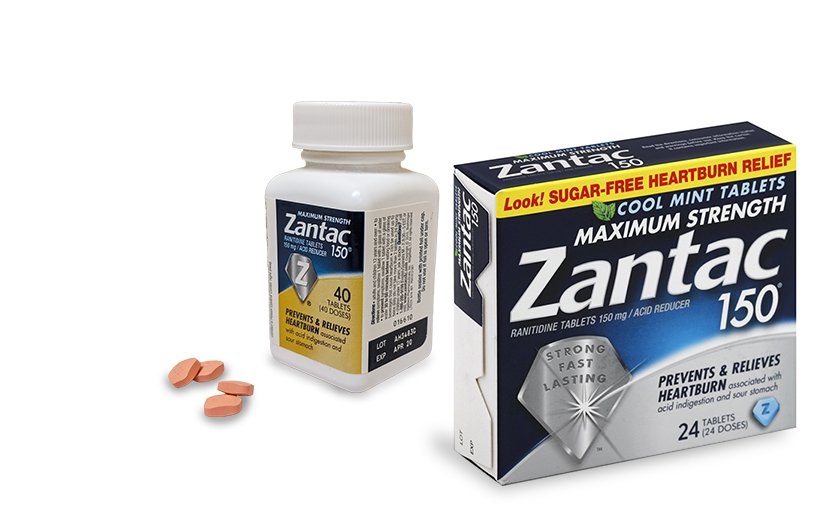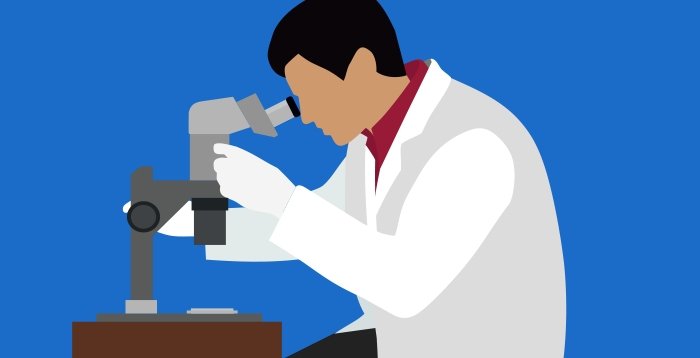LITIGATION UPDATE: On December 6, 2022, Judge Robin L. Rosenberg of the Southern District of Florida dismissed all the Zantac MDL lawsuits. She claimed insufficient evidence tied ranitidine to cancer. We are appealing to the Eleventh Circuit and are hopeful for a positive outcome. In the meantime, we are not taking any new Zantac clients.
A Zantac lawsuit is a legal claim for monetary compensation by victims who
- took the heartburn medication and
- were later diagnosed with cancer.
Zantac (and the generic ranitidine version) contained the carcinogen and hepatotoxin NDMA. Studies link NDMA to cancer in animals and humans.
In the current 2022 litigation, plaintiffs allege that Zantac makers put a dangerous product on the market and failed to warn consumers of the serious risks and side effects.
On April 1, 2020, the U.S. Food and Drug Administration (FDA) requested that all companies withdraw their ranitidine products. The FDA found “unacceptable amounts” of NDMA in the ingredient ranitidine. Since then, more than a dozen pharmaceutical companies recalled the drug.
Shouse Law Group is a mass tort law firm that represents Zantac victims throughout the United State who took prescription and/or over-the-counter Zantac/ranitidine. Our Zantac lawyers are pursuing financial damages to cover your:
- medical bills (including travel expenses for treatment),
- lost earnings (past and future),
- pain and suffering,
- loss of enjoyment,
- funeral expenses, and
- punitive damages.
The ranitidine lawsuits are not part of a class action. Instead, these are individual lawsuits of the victim against the drugmaker. Most of the claims will join into a multidistrict litigation (MDL) to streamline the litigation and settlement process.
Who qualifies for Zantac lawsuits?
In terms of case criteria, our firm is accepting cases where the person took Zantac – or a combination of Zantac and ranitidine – for at least once a week for a minimum of one year and afterward was diagnosed with any of the following five types of cancer:
- Bladder cancer
- Esophageal cancer
- Gastric cancer / stomach cancer (including gastrointestinal stromal tumors, carcinoid tumors, adenocarcinoma, and gastric lymphomas)
- Liver cancer
- Pancreatic cancer
[/hd-icon-list]
There is a short statute of limitations (time limit) in which to file a Zantac lawsuit claim following your cancer diagnosis. So consult with an attorney now.
In this article, we will answer the following 8 key questions regarding the 2022 Zantac lawsuits:

Zantac is the subject of thousands of lawsuits due to its carcinogenic effects.
What are the grounds for a Zantac lawsuit?

Two claims Zantac victims can sue drug manufacturers for are that:
- The drug had a defective design, and
- The drug’s labeling failed to warn about its risks
Defective design
Courts hold ranitidine makers to a strict liability standard. Therefore, drug manufacturers are liable if:
- The drug’s defective design posed a foreseeable risk, and
- The drug was manufactured and used as it was supposed to be1
Online pharmacy Valisure claims that ranitidine molecules are inherently unstable. When you ingest a normal dose of Zantac products, the active ingredient ranitidine hydrochloride converts into the carcinogen NDMA (N-nitrosodimethylamine). Therefore, NDMA contaminants are a natural by-product of ranitidine’s ingredients.2
It is irrelevant which pharmaceutical company made the drug. By design, Zantac reacts with the body’s chemistry to cause NDMA contamination. Consequently, each batch of Zantac is potentially carcinogenic.
Common evidence of design defects includes the original Zantac formula. The plaintiffs’ attorneys in Zantac lawsuits will also rely on expert witnesses to testify about the design defects.
Improper labeling and failure to warn
Like all medications, Zantac has a warning label. Though its label omits any mention of its carcinogenic potential.
Had doctors been informed of the risks, they would not have recommended or prescribed Zantac. Had patients known of the risks, they would have not taken it. After all, there are plenty of alternative heartburn and acid reflux medications available that do not carry such risks.
The best evidence of “failure to warn” in Zantac lawsuits is the Zantac packaging itself. The disclaimer’s omission of NDMA-related information suggests consumers were not informed of the hazards.
(In some states, brand name drug manufacturers have a legal duty to warn users of generic versions they do not make. In other states, these Zantac manufacturers do not have a duty to warn. So which state you sue in will dictate how to craft the lawsuit.) 3
In addition to defective design and failure to warn, Zantac plaintiffs are also bringing legal claims for:
- negligence,
- gross negligence,
- breach of implied warranty,
- breach of express warranty,
- negligent misrepresentation and fraud, and
- wrongful death.
What is the evidence that Zantac causes cancer?

According to online pharmacy Valisure, ranitidine’s inherent instability causes a chemical reaction that produces high levels of NDMA in the digestive tract. This is particularly true when nitrates are present. (Nitrates are found in foods such as bacon, hot dogs, or grilled meats.)
The FDA disagrees. It claims that typical stomach conditions should not cause ranitidine to metabolize into NDMA. Instead, the FDA maintains that NDMA is an impurity found in the drug itself. Though on April 1, 2020, it also admitted that storing ranitidine at higher than room temperature “may result in consumer exposure to unacceptable levels of this impurity.”
Since then, the FDA found that
- NDMA may form by storing ranitidine even at room temperature, and that
- more NDMA forms the longer the ranitidine is stored before consumption.4
Meanwhile, the World Health Organization and the US Environmental Protection Agency (EPA) classify NDMA as a “probable human carcinogen.” This means NDMA probably causes cancer in people.
Currently, research scientists employ NDMA to grow cancer in lab rats for research purposes.5 NDMA has been used to make rocket fuel. It has also been found in the blood pressure medicines Valsartan and Losartan, which are the subject of a large set of lawsuits by cancer victims as well.
NDMA exposure is safe in humans at no more than 96 nanograms per day. Though one tablet of the heartburn drug Zantac contains about 2.5 to 3 million nanograms. That is 26,000 to 31,000 times the safe daily maximum. 6
Studies also show that people who take Zantac have a 400-fold increase of NDMA levels in their urine. 7 It will be difficult for drug companies to deny the increased cancer risk spurred by such a high level of exposure.
Plaintiffs in a Zantac lawsuit have to prove that they ingested the drug. Frequent consumption over a sustained time period strengthens their case. Useful evidence includes:
- Pharmacy records (if the Zantac was prescribed),
- Prescription records from a health care provider,
- Receipts,
- Pill bottles/ packaging, and
- Medical records that show the plaintiff developed cancer after taking Zantac.
[/hd-icon-list]
It may be challenging for OTC (over the counter) users to prove Zantac usage. Most consumers do not keep their receipts or pill bottles for over the counter Zantac. Though the following records might help:

The FDA found high levels of NDMA in many ranitidine products. This triggered mass Zantac recalls.
Is this a class action or individual lawsuits?

Individual claims rather than class-action lawsuits. Though every Zantac lawsuit is being joined into an MDL – short for “multi-district litigation.” MDLs are a way for courts to streamline pretrial proceedings.
In 2023, the Zantac MDL judge will permit a handful of cases to proceed to trial. The results of these bellwether trials set the tone for future negotiations.
MDLs are fundamentally different from class actions.
- In MDLs, every case remains separate.
- In class actions, they are all combined.
Has all Zantac been recalled?

On April 1, 2020, the FDA requested that all Zantac- and ranitidine manufacturers withdraw the drug. This follows a warning the FDA issued on September 13, 2019. In the interim, more than a dozen manufacturers have made a voluntary recall of their ranitidine medications:
| Recall Date | Brand Name | Recalled Product | Company |
| 02/27/2020 | American Health Packaging | Ranitidine Tablets, USP 150mg | American Health Packaging |
| 01/08/2020 | Mylan Pharmaceuticals Inc. | Nizatidine Capsules 150mg and 300mg (similar to Ranitidine) | Mylan N.V. |
| 01/08/2020 | Northwind | Ranitidine Tablets 150mg and 300mg | Denton Pharma, Inc. dba Northwind Pharmaceuticals |
| 01/07/2020 | ANI | Ranitidine Tablets 150mg and 300mg | Appco Pharma LLC |
| 12/17/2019 | Glenmark | Ranitidine Tablets 150mg and 300mg | Glenmark Pharmaceuticals, Inc. |
| 11/22/2019 | Amneal | Ranitidine Tablets, 150 mg and 300 mg, and Ranitidine Syrup (Ranitidine Oral Solution, USP), 15 mg/mL | Amneal Pharmaceuticals, LLC |
| 11/19/2019 | PrecisionDose | Ranitidine Oral Solution, USP 150 mg/10 mL | Precision Dose Inc. |
| 11/15/2019 | GSMS Incorporated | Ranitidine HCl 150mg and 300mg Capsules | GSMS, Inc. |
| 11/08/2019 | AHP | Ranitidine Liquid Unit Dose Cups | American Health Packaging |
| 11/06/2019 | Aurobindo & DG Health | Ranitidine | Aurobindo Pharma USA, Inc. |
| 10/25/2019 | Novitium Pharma | Ranitidine Hydrochloride Capsules 150 mg and 300 mg | Novitium Pharma |
| 10/25/2019 | Lannett Company, Inc. | Ranitidine Syrup (Ranitidine Oral Solution, USP), 15mg/mL | Lannett Company, Inc. |
| 10/23/2019 | Dr. Reddy’s, Kroger, Walgreens, and others | Ranitidine Tablets & Capsules | Dr. Reddy’s Laboratories Ltd. |
| 10/23/2019 | Sanofi | Zantac 150, Zantac 150 Cool Mint, Zantac 75 (OTC Products) | Sanofi |
| 10/23/2019 | Perrigo Company plc | Ranitidine (all pack sizes) | Perrigo Company plc |
| 09/25/2019 | Apotex Corp. | Ranitidine Tablets 75mg and 150mg | Apotex Corp. |
| 09/23/2019 | Sandoz Inc. | Ranitidine Hydrochloride Capsules | Sandoz Inc. |
The FDA also requested drug makers to perform their own laboratory tests on all their ranitidine products and to mail the FDA samples. The FDA further instructed manufacturers not to sell any lots that contain more than the daily NDMA limit of 96 nanograms. Also, manufacturers must notify the FDA if any lots do exceed the NDMA limit.
Shortly following the FDA’s announcement, the Defense Health Agency (DHA) – which manages Tricare – advised military beneficiaries to consult with their physicians about stopping Zantac. Veterans make up a large portion of Zantac users. 9
The following are some of the retailers that stopped selling ranitidine:
Some common ranitidine brands include:
Alternatives to generic Zantac that contain no NDMA include:
In April 2021, Sanofi started selling Zantac 360, a new, over-the-counter version without the same cancer risks. The active ingredient is famotidine and therefore does not fall under the Zantac recall.
What is the average payout for Zantac lawsuits?

There were no 2021 Zantac lawsuit payouts, and none are expected in 2022 either. Settlement talks typically do not begin until some cases go to trial – which will likely happen in 2023.
How these bellwether trial verdicts turn out helps gauge what money victims can demand. Predictably, plaintiffs’ attorneys are aiming for a very high Zantac lawsuit payout. No amount of money can make up for getting cancer.
Although the Zantac litigation has incurred some delays because of the COVID 19, it is still proceeding according to schedule.
MDL settlements resolve through either:
- Global (or matrix) settlements: This is when defendants pay out a Zantac lawsuit settlement amount that covers all claims. Then plaintiffs’ attorneys use a matrix of criteria to determine how much each plaintiff pockets; or
- Inventory settlements: Each plaintiff agrees to an acceptable minimum payout. Then if their attorneys win a larger amount, each client will receive a percentage of the bonus funds.
Who makes Zantac?

More than 10 manufacturers make prescription Zantac. More than 20 make OTC Zantac. Manufacturers that have recalled its ranitidine products include:
GSK originally developed prescription ranitidine in 1977. It was FDA-approved in 1983 and went generic the following year. As a histamine-2 / H2 blocker antacid, ranitidine drugs help to neutralize stomach acid and prevent and treat:
Pfizer developed OTC ranitidine in 2004. Boehringer Ingelheim purchased it in 2006. Then Sanofi purchased it in 2017.
Ranitidine is available in various forms, including:
- capsules,
- tablets, and
- syrup.
Common dosages are:
- 75 mg,
- 150 mg, and
- 300 mg.
Ranitidine was one of the first drugs to earn a billion dollars in sales.10
What are Zantac’s long-term effects?

Cancer is not the only potential consequence of taking Zantac. There are at least twenty other medical conditions linked to ranitidine use:
- Liver failure or reduced liver function
- Reduced kidney function
- Reduced lung function
- Enlarged liver
- Jaundice
- Skin rash
- Hair loss
- Hepatitis
- Vitamin B-12 deficiency
- Reduced platelet levels
- Cardiac arrhythmia (irregular heartbeat) and/or tachycardia (rapid heartbeat)
- Nervous system problems
- Elevated pneumonia risks
- Fever
- Nausea and vomiting
- Stomach cramps, constipation and/or diarrhea
- Dizziness, drowsiness, and/or sleep problems
- Headaches
- Tender breasts (in males)
- Decreased sex drive
Some short-term effects of Zantac are scarring and fibrosis of the liver.
Additionally, many people diagnosed with cancer after taking Zantac are also developing:
- Crohn’s Disease – an inflammatory bowel and digestive tract disease that manifests as diarrhea, pain, weight loss, and cramping; and/or
- PPH (Primary Pulmonary Hypertension) – when the lungs’ blood vessels narrow, resulting in high blood pressure in the pulmonary artery.
Has the Zantac lawsuit been settled?

Not yet. As of 2022, there is a Zantac MDL out of the Southern District of Florida (West Palm Beach). The MDL number is 2924. The judge is US District Judge Robin L. Rosenberg. The defendants in this Zantac lawsuit include:
This MDL is for victims who developed cancer after taking ranitidine. All similar Zantac cancer lawsuits will be consolidated into this MDL. Plaintiffs are seeking substantial damages to reimburse them for all expenses.
In July of 2021, the MDL judge dismissed claims against the generic drug makers, such as
- Teva and
- Amneal Pharmaceuticals.
Claims were also dismissed against retailers, such as
- Albertsons,
- Amazon.com,
- Costco,
- CVS,
- Kroger, and
- Walgreens.
But claims against the brand name manufacturers remain.
As of September, 2022, there are more than 2,000 plaintiffs and more than 50,000 claimants (claimants are people who do not officially bring a civil lawsuit but can take part of the MDL settlement).
For logistical purposes, all the bellwether plaintiffs will be Florida residents. Trials are not expected to begin until 2023.11
Class actions
There is also a Zantac class action lawsuit out of the Superior Court of Alameda, California under JCCP number 5150 (JCCP is short for Judicial Council Coordination Proceedings).
Judge Evelio Grillo set the first trial for February 13, 2023, which is a case that plaintiffs selected. The next one is scheduled for May 1, 2023, though chances are it may be unsuccessful since the defendants picked the case. The following two bellwethers trials are slated for
- August 7, 2023, which the defendant selected, and
- October 23, 2023, which the plaintiff selected.12
Legal References
-
See, for example, In re Testosterone Replacement Therapy Prods. Liab. Litig., 136 F. Supp. 3d 968 (N.D. Ill. 2015).
- Valisure, Citizen Petition on Ranitidine (September 9, 2019). In its study, Valisure employed gas chromatography testing and a HS-C-MS methodology. Ranitidine’s Nitroso (O=N) combines with its own DMA (H3C-N-CH3) to form NDMA. Valisure also says that the enzyme dimethylarginine dimethylaminohydrolase (DDAH) interacts with ranitidine to free DMA from ranitidine, which in turn allows it to combine with available nitrites, which in turn could increase the amount of NDMA in the body. During tests, Valisure found 2,511,469 ng of NDMA in Zantac OTC and 3,267,968 ng of NDMA in Zantac Cool Mint. Brendan Pierson, Judge finds economic injury, design defect claims preempted in Zantac MDL, Reuters (January 8, 2021). See also Andrea D. Steffen, Some Drugs Transform Into A Cancer-Causing Chemical In The Stomach, Intelligent Living (Marc 28, 2021). See also Rep. R.L. DeLauro, letter to FDA and DHHS (December 18, 2019).
- See, for example, Mut. Pharm. Co. v. Bartlett, (2013) 570 U.S. 472; see, for example, TH Novartis Pharm Corp., (Cal. 2017) 4 Cal 5th 145; Katie Thomas, “In 5-4 Ruling, Justices Say Generic Makers Are Not Liable for Design of Drugs“, New York Times (June 24, 2013).
- 12/4/2019: UPDATE – FDA requires additional testing of ranitidine and nizatidine as part of agency’s ongoing effort to help ensure product safety for patients and consumers, FDA Updates and Press Announcements on NDMA in Zantac (ranitidine); 4/1/20: FDA Requests Removal of All Ranitidine Products (Zantac) from the Market. Note that Shouse Law is no longer taking cases for breast cancer or kidney cancer.
- Technical Fact Sheet – N-Nitroso-dimethylamine (NDMA), EPA (January 2014), NDMA is a B2 carcinogen; note that EPCRA (the Emergency Planning and Community Right-to-Know Act of 1986) classified NDMA as “extremely hazardous.”; the International Agency for Cancer Research (IARC) of the World Health Organization categorized the genotoxin NDMA as Group 2A (probably carcinogenic to people) – rats developed tumors whether they were exposed orally, through inhalation, subcutaneous (under the skin), or through an injection. See also Dr. Mira M. Hidajat et. al., Lifetime exposure to rubber dusts, fumes and N-nitrosamines and cancer mortality in a cohort of British rubber workers with 49 years follow-up, Occupational and Environment Medicine (February 16, 2019).
- See note 4. NDMA can also be found in some cured meats and in the fumes from tobacco. See note 2.
- Teng Zeng, William A. Mitch, Oral intake of ranitidine increases urinary excretion of N-nitrosodimethylamine, Carcinogenesis, Volume 37, Issue 6, June 2016, Pages 625–634 (aka “The Mitch Study” or “The Stanford Study”).
- N-nitrosodimethylamine (NDMA) in Ranitidine: Emery Pharma’s Perspective, the road to filing the company’s first Citizen Petition, CBS News coverage, and the FDA’s response (April 6, 2020)(even normal transport and storage conditions cause NDMA to accumulate).
- Patricia Kime, Defense Health Agency to Beneficiaries: Stop Taking Zantac, Military.com (April 14, 2020) (“‘The FDA is advising consumers taking OTC ranitidine to stop taking any tablets or liquid they currently have, dispose of them properly and not buy more; for those who wish to continue treating their condition, they should consider using other approved over-the-counter products.'”).
- TIMELINE-Popular heartburn medicine Zantac pulled off store shelves, Reuters (October 2, 2019); currently, more than 41 counties have acted – South Korea, Egypt, Canada, and Bangladesh have banned ranitidine, and it was recalled from shelves and distribution by Denmark, Pakistan, and Germany. See also Julianna Tatelbaum, Pharma stock investors brace for billions in heartburn drug litigation charges, CNBC (August 12, 2022).
- Zantac Generic Drugmakers Out of Consolidated Cancer Lawsuits, Bloomberg Law (July 9, 2021). See also MDL transfer order; Garzaet al v. Sanofi-Aventis U.S. LLC et al, 19-cv-05772, U.S. District Court for the Northern District of California (filed September 13, 2019). See also Zantac (Ranitidine) Products Liability Litigation Pretrial Orders #43 (September 25, 2020), #41 (August 26, 2020). Pretrial Order #69: Bellwether Selection (the “Bellwether Pool” has at least 3,000 cases, which will then be narrowed into an “Initial Discovery Pool” of at least 200 cases – at least 25 cases for each of the eight types of eligible cancers – and then finally a “Final Discovery Pool”.). Second Amended Pretrial Order #65: Second Amended Second Pretrial Order Establishing Case Management Schedule (the Plaintiffs’ Leadership Counsel (PLC) has a deadline of January 24, 2022, to produce expert reports regarding general causation). Lexecon Inc. v. Milberg Weiss Bershad Hynes & Lerach, (1998) 523 U.S. 26. Two of the first plaintiffs who sued the Zantac manufacturers in 2019 include Mark Allan Blake and Joseph L. Galimidi. See also Statement: Zantac (ranitidine) litigation, GSK.com (August, 2022).
- Dodson et. al. v. Sanofi et. al, Case No. 20-356, U.S. District Court for the Southern District of Ohio (filed January 22, 2020). See also Kevin Dunleavy, Manufacturing GlaxoSmithKline sells off $155M Zantac plant in India to Hetero Labs for a fraction of its cost, FiercePharma (March 31, 2021). Nate Raymond, Sanofi, GSK can’t escape Zantac proposed class actions, judge rules, Reuters (October 7, 2021). Zantac Bellwether Dates Set in CA, Medtruth (July 6, 2022). Pretrial Order # 77 Order Setting Daubert And Summary Judgment Briefing Schedule, In re Zantac (Ranitidine) Prods. MDL No. 2924 Liab. Litig. (May 12, 2022).
Additional Studies
- Analysis of Ranitidine-Associated N-Nitrosodimethylamine Production Under Simulated Physiologic Conditions, Pharmacy and Clinical Pharmacology (January 29, 2021)(One 150 Zantac pill mixed with SGF (simulated gastric fluid) converted into 947 ng of NDMA after only two hours. “The results of this study suggest that ranitidine may be a significant source of NDMA under a range of physiologically relevant conditions. Namely, under simulated gastric conditions, NDMA yield from a standard tablet of ranitidine was seen to increase with both increasing nitrite and decreasing pH to levels up to 3 orders of magnitude beyond established limits.”).
- L, Ranitidine use, N-Nitrosodimethylamine (NDMA) production and variations in cancer diagnoses (preprint), MedRXiv (January 29, 2021)(“Under simulated gastric conditions, ranitidine yields increasing amounts of NDMA over time (up to, and likely beyond 4 hours) and with increasing concentrations of sodium nitrite. In addition, among a cohort of cancer patients reporting use of H2-blockers or PPIs at the time of diagnosis, we found an association between ranitidine use and cancers of the breast, thyroid, bladder and prostate.”).
- Chris R Cardwell et al., Exposure to ranitidine and risk of bladder cancer: a nested case-control study, The American Journal of Gastroenterology (August, 2021)(“In this large population-based study, the use of ranitidine particularly long-term use was associated with an increased risk of bladder cancer.”)
